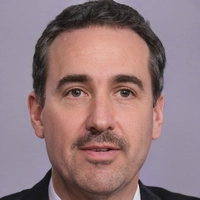No one drops a few lakhs on IVF because they want a gamble. Still, clinics in Bangalore and beyond can’t hand you a guarantee like you’re buying a fridge. The truth: for every hopeful couple, there’s that cold, hard question—what are my actual odds of getting pregnant with IVF? Some walk away with baby pictures, others with another round of disappointment. There’s no sugar-coating, though the science isn’t all doom and gloom. What happens in those petri dishes, clinics, and waiting rooms isn’t pure luck—it’s probabilities stacked up against personal health, age, and a truckload of details.
How Does IVF Really Work, and What Affects Your Odds?
Okay, IVF (in vitro fertilization) starts with egg retrieval and sperm collection, makes them meet in a dish, and (with luck and lab magic) gets an embryo ready for the uterus. But it’s never just about the steps—it’s about the tiny chances at each point. Age? It’s massive. A woman under 35 has a much better shot than someone 40 or 42. Think about it: According to data from the Indian Society for Assisted Reproduction, IVF live birth rates for under-35s hover around 40–45% per fresh cycle, but drop to almost 5–10% for women over 42. That’s a bigger cliff than Nandi Hills, and that’s not even talking about miscarriages.
Why does it drop? It’s mostly egg quality. As women get older, eggs accumulate DNA errors and are less likely to grow into healthy embryos. Even if you do everything right—eat clean, don’t smoke, avoid stress—your biological clock still ticks. For men, sperm matters too, but it usually doesn’t decline as sharply till after 45–50. Some other things that make a huge difference? Polycystic ovarian syndrome (PCOS), endometriosis, blocked tubes, previous diseases, and how your body responds to fertility shots. India sees a lot of cases where poor nutrition or unaddressed conditions impact both egg and sperm quality.
Let’s bust a myth: clinics love advertising their highest numbers. "90% success rate!" But they’re often talking about clinical pregnancy (just seeing a heartbeat at 6 weeks). Actual babies born are less. The Indian Council of Medical Research tracks these figures, and even in metro cities like Bangalore, most top clinics see a true live birth rate per IVF cycle between 35% (if you’re under 35) and less than 10% (if you’re over 40). Keep in mind, those numbers refer to one cycle. Some couples need two, three, or more cycles. If you run three cycles back to back, your odds do stack up, but so does the cost and stress. Here's a quick table of the average live birth rates per IVF cycle in India, 2024 data:
| Age Group | Live Birth Rate Per IVF Cycle |
|---|---|
| <35 | 40–45% |
| 35-37 | 30–35% |
| 38-40 | 20–25% |
| 41-42 | 10–15% |
| >42 | 5–10% |
These numbers don’t lie, but they also don’t account for everything—like the skill of your doctor, lab quality, and your personal health quirks. Ever heard someone say their friend got pregnant "on the first try at 40"? That happens, but it’s not the average story. Most need patience and—honestly—a backup plan.

What Tips or Lifestyle Changes Can Boost Your Odds?
You probably already know the basics: eat better, don’t drink too much, stress less. But let’s get specific because these tiny tweaks sometimes do make a difference. The best scientific evidence supports some boring, everyday stuff. For women, a diet high in leafy greens, nuts, oily fish (think salmon or mackerel if you’re non-vegetarian), and whole grains is linked with higher egg quality. Ditching junk food, excess sugar, and processed carbs can balance hormones, especially if you’ve got PCOS. If you smoke, quit. Smoking seriously lowers your IVF chances by hurting both eggs and the uterine lining. For men, loading up on antioxidants (vitamin C, E, zinc, selenium—basically what comes in a regular Indian diet that isn’t all fried or processed) can improve sperm swimming power and DNA health. Even modest alcohol intake reduces sperm quality, so dry up during your cycles.
Weight matters, but not in the body-shaming way some people think. Studies out of Bangalore and Chennai clinics show that women with a BMI between 20 and 24 tend to have better IVF results—too low or too high shifts your hormones and makes implantation harder. That said, don’t do crash diets or sudden cleanses. Regular exercise (even brisk walking) helps, but over-exercising can throw things off, especially for women.
Rest is underrated. Some doctors still tell people to go on strict bedrest, but newer evidence says normal movement after embryo transfer is fine—and being relaxed, not obsessing, and getting 7-8 hours of sleep beats any magic ritual out there. Your mental state? No need for toxic positivity, but high stress hormones like cortisol can mess up ovulation and sperm function. Couples who did yoga or mindfulness for a few months before IVF saw better fertilization rates, according to a 2023 AIIMS study.
Let’s not pretend supplements cure everything. Folic acid is a must, and some research from India recommends coenzyme Q10 or DHEA for women over 35, to help egg quality. But consult your doctor first, since popping random pills can actually push your hormones the wrong way. Same for men: too much vitamin A or E can be toxic. Want science-backed routines? Here's a fast checklist to boost those IVF success rates:
- Eat a Mediterranean-style diet (or its Indian equivalent—think dal, sabzi, fruits, nuts, and olive oil where possible)
- Avoid fried, sugary, or processed foods
- Quit smoking & cut back alcohol
- Keep BMI in healthy range; exercise sensibly
- Sleep 7-8 hours nightly
- Take folic acid—and only other supplements your doctor suggests
- Try yoga, meditation, or counseling for stress
Even with all this, IVF isn’t a magic wand. Clinics will suggest extra tricks: blastocyst transfer, genetic testing, freezing embryos, or trying ICSI (a method that injects sperm directly into the egg). Each adds cost but can help in some situations—especially with poor sperm or previous failed cycles. Get second opinions. Feel free to push back if you’re given a "deluxe" package that feels like pure marketing.

How to Navigate Your IVF Journey—And What To Expect
This whole process can mess with your head. You start optimistic, do every injection, make it to the egg retrieval—then check the phone constantly for the doctor's update. There are waitlists at clinics, repeated scans, and loads of paperwork. And honestly, the emotional cost can hit as hard as the bills. It isn’t only about the physical side—it’s about hope, fear, social pressure, sometimes family interference, or awkward questions from random aunties. Plenty of people consider IVF "just a Plan B," but anyone who’s tried it knows, it’s a major test.
Here’s what’s wild: in India, about 2.5–3.5 lakh IVF cycles happened last year (per ISAR)—a huge jump even from five years ago. The popularity’s up, but so are expectations. There’s also new tech—fancier microscopes, time-lapse incubators to watch embryos grow, embryo glue, AI software for embryo selection. Some clinics have started using next-gen sequencing to check for healthy chromosomes. Still, the best equipment in the world can’t turn back the biological clock or fix every random chance. Even robust embryos sometimes fail to implant. Why? Science hasn’t cracked that part yet. Could be the immune system, uterus lining, or just plain luck.
One thing that helps: lining up a support system. That can be your partner, your friends, or a good counselor—because you’ll face emotional blows, delays, and maybe even failed cycles. Most Indian couples don’t talk openly about infertility, but reaching out early makes surviving the ups and downs way easier. Another tip: be ready for more than one round. Clinics rarely tell you first go that "success" is usually 1-in-3 for younger women, and often less for older ones. Financially, a single cycle in Bangalore averages Rs 1.5–2 lakhs in a reputable clinic, and higher if you include advanced procedures or genetic testing.
And the stories? Everyone knows someone who "tried for years and finally got a miracle baby"—but for every happy ending there are many who keep going, try adoption, or decide to stop and be okay. Be kind to yourself, keep your expectations grounded, but don’t lose hope. IVF is tough, but not impossible. Know your numbers, ask loads of questions, push for honest answers, and don’t let one cycle (or two or three) define your self-worth. Sometimes, the odds shift just enough—and that’s what keeps people trying. If you’re on the edge about IVF, or just want to know the unvarnished truth—now you do.






